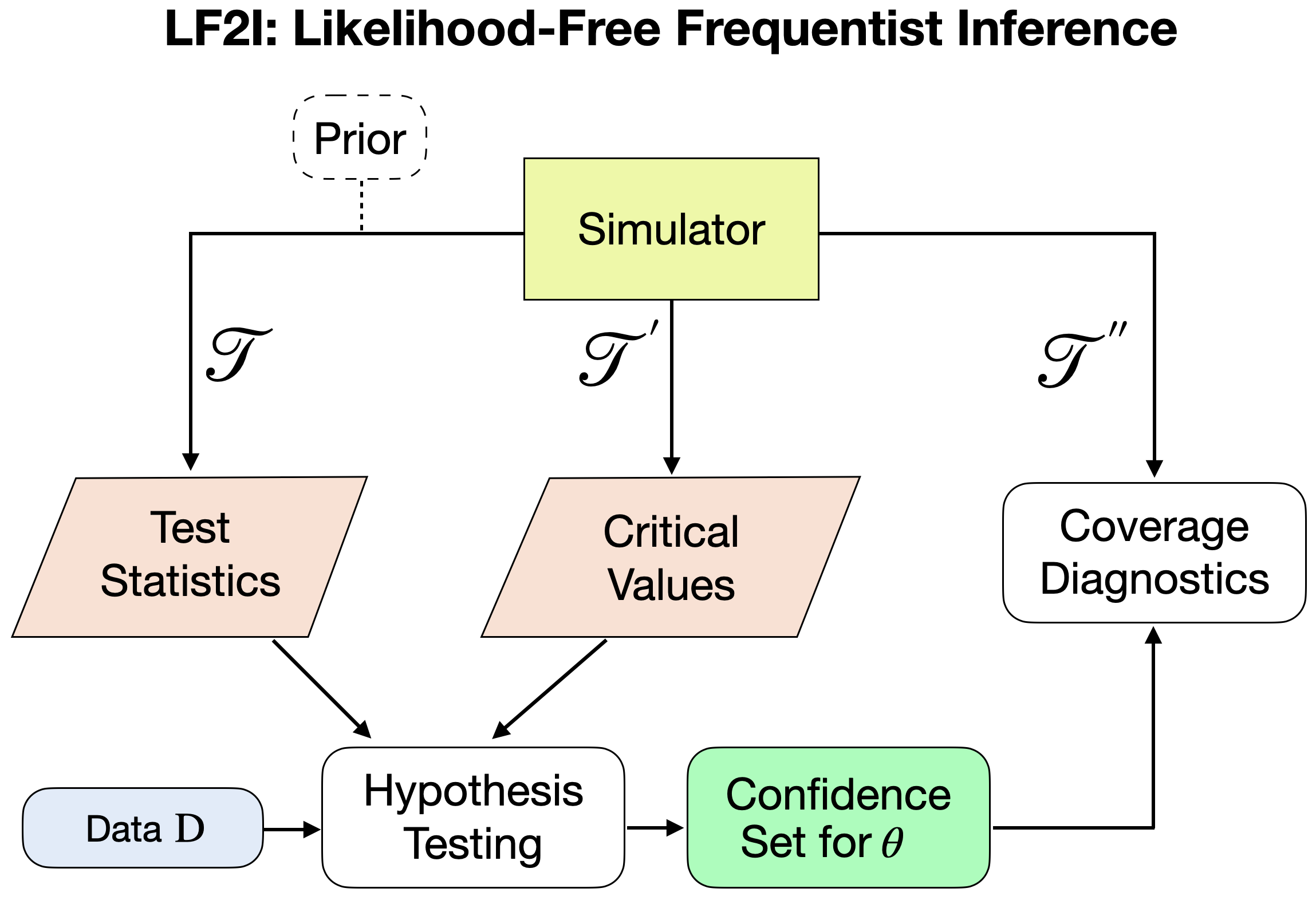Likelihood-Free Frequentist Inference: Bridging Classical Statistics and Machine Learning for Reliable Simulator-Based Inference
Many areas of science make extensive use of computer simulators that implicitly encode intractable likelihood functions of complex systems. Classical statistical methods are poorly suited for these so-called likelihood-free inference (LFI) settings, especially outside asymptotic and low-dimensional regimes. At the same time, traditional LFI methods - such as Approximate Bayesian Computation or more recent machine learning techniques - do not guarantee confidence sets with nominal coverage in general settings (i.e., with high-dimensional data, finite sample sizes, and for any parameter value). In addition, there are no diagnostic tools to check the empirical coverage of confidence sets provided by such methods across the entire parameter space. In this work, we propose a unified and modular inference framework that bridges classical statistics and modern machine learning providing (i) a practical approach to the Neyman construction of confidence sets with frequentist finite-sample coverage for any value of the unknown parameters; and (ii) interpretable diagnostics that estimate the empirical coverage across the entire parameter space. We refer to the general framework as likelihood-free frequentist inference (LF2I). Any method that defines a test statistic can leverage LF2I to create valid confidence sets and diagnostics without costly Monte Carlo samples at fixed parameter settings. We study the power of two likelihood-based test statistics (ACORE and BFF) and demonstrate their empirical performance on high-dimensional, complex data. Code is available at https://github.com/lee-group-cmu/lf2i.
PDF Abstract

